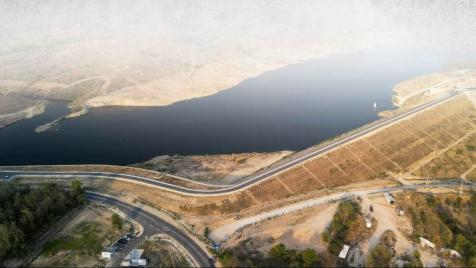There’s now a deadline to begin construction of the (forgotten) Rila highway in Bulgaria
It has the potential to transform the Sofia region by linking the country’s other three highways - Struma, Trakia and Hemus
© ECONOMIC.BG / Krasimir Svrakov
The construction of the Rila highway in Bulgaria, about which various successive governments have been talking for years, could finally begin in 2026. Andrey Tsekov, the Minister for regional development, stated this during an event called "Cities - a meeting with the businesses of the Sofia region", organized by Kapital newspaper. According to him, the realization of the project will have a huge impact on the Sofia region.
This will be the transformational project for the region because it will improve the movement of people and goods," said Tsekov, quoted by the ministry's press centre.
He recalled that in next year's budget, funds have been set aside for updating the conceptual project, carrying out geological studies, a detailed layout plan and other design activities. Following all these, environmental procedures and a technical design will be performed.
We remind you that the construction of the Rila highway will make it possible to unite the three existing Bulgarian highways - Struma, Trakia and Hemus. The length of Rila should be about 100 km, and the idea for its creation dates back more than 20 years. In 2021, the Balkan Transport and Infrastructure Forum stated that the planned highway would actually extend to 140 km, and as an analysis from 2008 shows, even then it was estimated to cost almost EUR 500 million - now that amount would be significantly larger.
In August 2023, the Bulgarian Road Infrastructure Agency (API) launched a tender for the design of a Gyueshevo – Dupnitsa highway and thus took the first real steps towards the realization of the project. The 62-kilometre road stretch in question would form part of the somewhat forgotten Rila highway project. The initial idea of the regional development ministry was for the section to be a high-speed expressway, but given the traffic intensity, it was subsequently changed to a highway.
In September 2022, API studied the conceptual proposal designs submitted for the tender, however, the price tags of said proposals were only revealed on 16 March 2023 – that is 7 months later. The beneficiary was picked on 3 July of this year. Via - Plan EOOD was chosen with a price offer of about EUR 1 million.
The deadline for developing the conceptual project is 150 calendar days from the date of conclusion of the contract and includes only the design time. The contract was signed on 13 September, according to information in the Public Procurement Register.
On the Economic.bg podcast, Petar Mutafchiev, the chairman of the Forum for Balkan Transport and Infrastructure, commented that API should now design the entire road and not just 62 kilometres of it.
A hybrid between a motorway and an expressway
Meanwhile, on 20 October, API launched a tender for a road safety impact assessment of the Rila highway and a cost-benefit analysis for its construction. Some of the main characteristics of the highway are also listed in the documentation attached to the tender.
The road will be 89 km long and will pass through the territories of Sofia and Kyustendil regions. The project previews the construction of 54 large auxiliary facilities, 4 tunnels with a total length of 1600 m and 9 road junctions.
Most likely, the differing accounts on the highway’s planned length come from the fact that it will be divided into two lots: Gyueshevo (border checkpoint with North Macedonia) - Dupnitsa and Dupnitsa - Trakia highway.
The technical specifications state that the road will be built as an expressway with a designated speed limit of 120 km/h - A25.5 gauge. There is an exception only for a small section, which will be A29 gauge (motorway) - between the Samokov and Bogoriditsa junctions.
Translated by Tzvetozar Vincent Iolov

 Gloria Hristova
Gloria Hristova 


